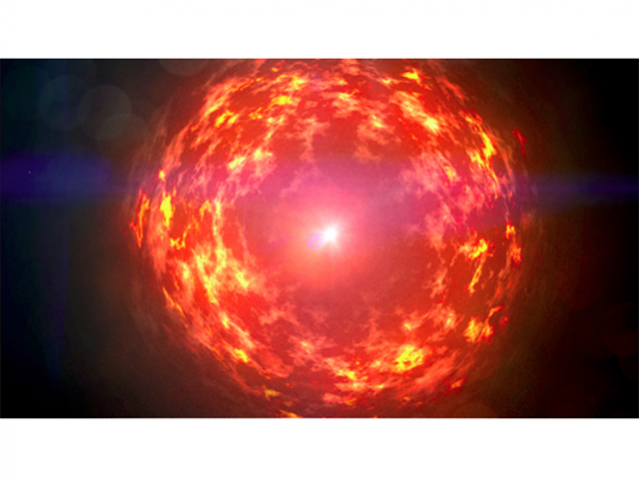The origin of Cosmic Rays: Are supernovae powerful particle accelerators?

Cosmic rays are particles (mostly protons and nuclei) accelerated to speeds comparable to that of light, travelling through our Galaxy and constantly bombarding Earth’s atmosphere. Being charged particles, their paths are heavily altered by the magnetic field in our Galaxy. Therefore we cannot trace them back to their origin, that is, the energetic source that accelerated them in the first place. But when these cosmic rays collide with gas inside or near their sources, they will produce a glow of gamma rays, the most energetic light.
For decades we have thought that supernovae, the explosions terminating the life of the most massive stars, are those hidden astrophysical sites accelerating cosmic rays. Indeed, Fermi previously found how the remnants of some supernovae can accelerate particles up to extreme energies [1]. But the puzzle is not complete: only a very few supernova remnants can do that, and they cannot accelerate all the cosmic rays that we detect on Earth. So, still today, the origin of Galactic cosmic remains a hot topic. A possible explanation proposed by theorists is that ideal physical conditions occur just for a few days to weeks after the explosion. Unfortunately, only 2 or 3 supernovae explode every century in the Milky Way, and we will only be able to see a glow of gamma rays with the most sensitive gamma-ray detectors for galaxies just beyond the edge of our galactic neighbourhood.
In May 18th 2023, however, we were lucky. A supernova explosion (SN 2023ixf) occurred next door, in the Pinwheel Galaxy, a spiral galaxy “only” 22 million light years away from ours. This is the closest supernova arising from the death of a massive star since the beginning of the Fermi mission 15 years ago. Therefore we have the first opportunity to experimentally test how cosmic rays are accelerated within a week after an explosion. And for all we know about the early stages of a supernova, at that distance we should have detected a bright energetic glow … but we found no gamma-ray signal in the Large Area Telescope detector on board Fermi!
How can that be? Supernova should convert around 10% of their energy into cosmic rays, yet combining our observations with results from optical telescopes like the Hubble Space Telescope we surprisingly find that it cannot be larger than 1%. We then explored several physical ingredients missing in our modelling that can explain that difference and found only two possible reasons: (1) either the explosion and the distribution of gas around it are highly asymmetric and non-spherical, or (2) we do not understand the shock conditions at the early phases of supernovae. As a result, our work[2] with Fermi provides a new, fortunate path towards resolving whether these explosions are or not the missing piece in the puzzle of the origin of Galactic cosmic rays.
For more information:
Guillem Martí-Devesa and Giacomo Principe
Dipartimento di Fisica, Università di Trieste and INFN, sezione di Trieste
e-mail: guillem.marti-devesa@ts.infn.it, giacomo.principe@ts.infn.it
[1] https://www.nasa.gov/universe/nasas-fermi-confirms-star-wreck-as-source-of-extreme-cosmic-particles/
[2] https://aanda.org/10.1051/0004-6361/202349061
Credit: NASA’s Goddard Space Flight Center


